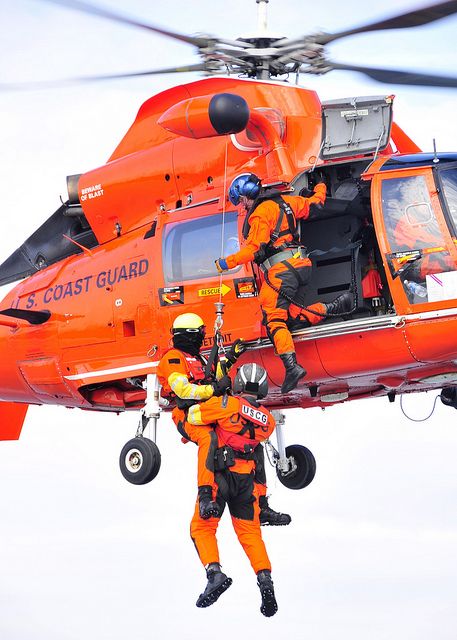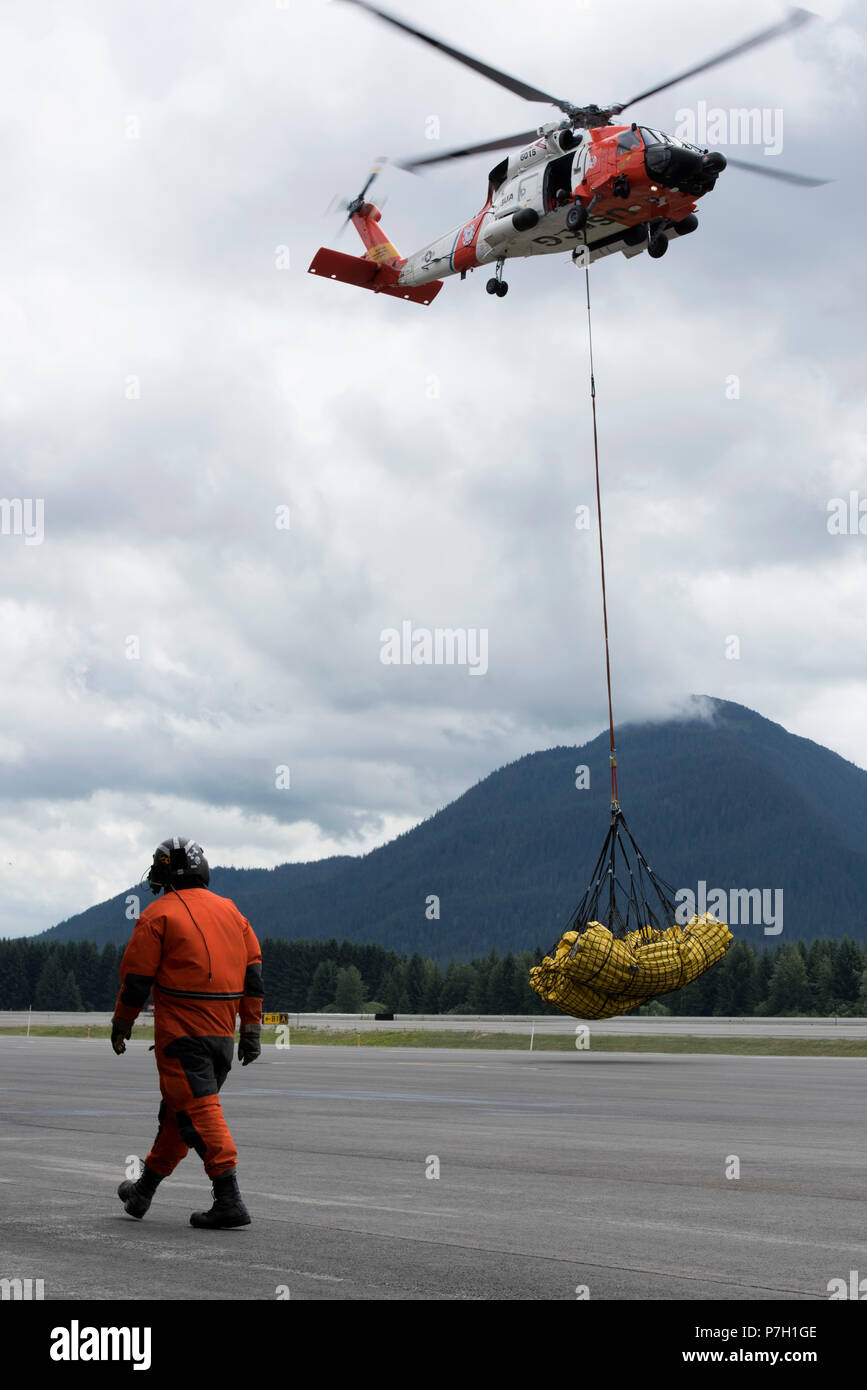Here's How it works:
The internal hoist on a CH-47 uses the hydraulic winch, which can pull thousands of pounds, but because it is attached to the roof of the cabin, it is limited to 600 pounds.
The external Breeze-Western hoist is smaller and also has a 600 pound limitation, due to the smaller size of the hydraulic components.
The SPIES and FRIES systems are known as "fastrope" and are used for depositing special operators onto rooftops and tight places. One way ticket down...
The Breeze hoist can use a basket for one or two people, but a pararescueman must go along for the ride, so that 600 pounds gets used up fast.
So, a barge or boat with a huge crane and a six-man basket is the most you can move off a boat unless you use dinghies or survival boats and a rescue boat. That gets messy...





